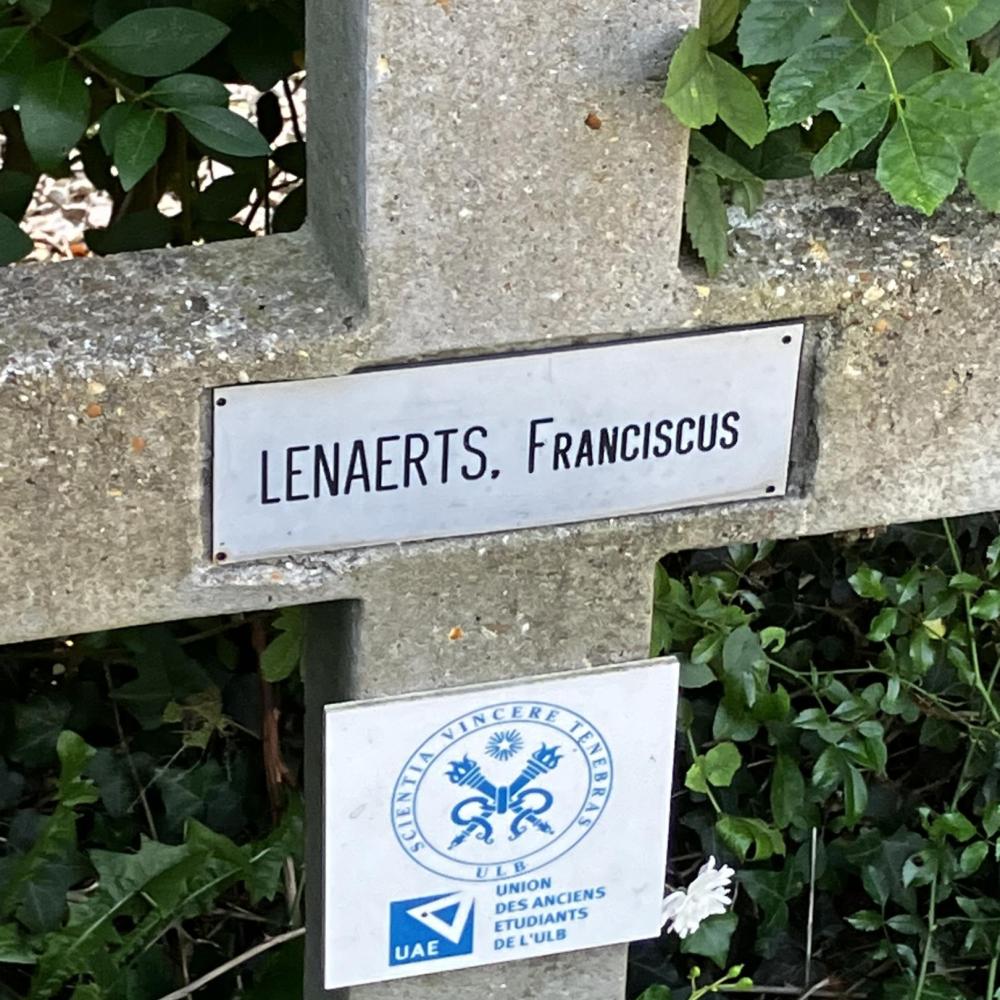
The name of Frans Lenaerts was read out at the memorial to the executed in Schaerbeek during the Sint-Verhaegen commemoration on 20 November. Lenaerts’ role as a resistance fighter was great, but his presence in post-war memories of the resistance is limited. The Dutch-speaking ULB student was executed by the Nazis for his acts of resistance in 1943 at the National Shooting Range in Schaarbeek, where the memorial now stands.
This article is based on research by Brecht Kreynen of the Centrum voor Academische en Vrijzinnige Archieven.
On 10 May 1940, when the German Wehrmacht invaded Belgium, an era of occupation and oppression began. But the country did not let itself be overpowered without a fight. The resistance flourished, and one of the notable figures in this story was Frans Lenaerts. This young man from Antwerp, a graduate of Ghent State University and ULB, would trade his doctor’s coat and stethoscope for binoculars and a pistol in his fight against the German occupation.
The only known portrait of resistance fighter Frans Lenaerts. He was born in Nijlen on Feb. 21, 1915. Source: www.maisondusouvenir.be
The resistance in Belgium consisted of a network of people determined to fight the occupiers. For Lenaerts, Jewish resistance fighter Antoinette Kleinhaus was the key figure who put him in touch with Fernand Wolff, a name that would become a common thread in his life. During the war, Lenaerts was active in two resistance groups: the Front de la Résistance Belge (FRB) and the Groupe Clarence.
Frans Lenaerts specialised in observing freight and railway traffic and tracing German manoeuvres.
The FRB was founded by Wolff and Jules Van Vlasselaer, known by his pseudonym “Dullin”, at the end of 1940. Around February 1943, the FRB was presumably fully incorporated into the Service Clarence, an intelligence service that maintained close links with armed and sabotaging resistance groups.
Lenaerts specialised in observing freight and railway traffic and tracking German manoeuvres. He was not only a spy; he also took part in daring operations, such as the attempt to free Marcel Verhamme, a Clarence member and radio operator. Unfortunately, Verhamme was arrested in July 1943 and died in captivity four months later.
His last act of resistance
On 7 December 1943, Lenaerts carried out his last act of resistance. According to biographical notes, he was with Wolff on a punitive expedition when their truck was stopped by a German patrol. However, Kleinhaus claimed that Wolff and Lenaerts were involved in a gunfight after throwing the corpse of an informer into the canal near Saincteletteplein. Interestingly, Kleinhaus dated these events to March 1944, although Lenaerts had been executed on 17 December 1943. Police reports from that day are not available to clarify the details.
Although Lenaerts’ role in the Resistance was of great value, his contribution to its history often seems to be overlooked. The man, known as “tall Frans Lenaerts, with his brash Antwerp accent”, deserves to be known more than for his height and dialect.

Frans Lenaerts memorial at the Nationale Schietbaan
During the Sint-Verhaegen commemoration, a wreath of flowers for this Dutch-speaking resistance fighter is laid on the Firing Squad Memorial in Schaarbeek.